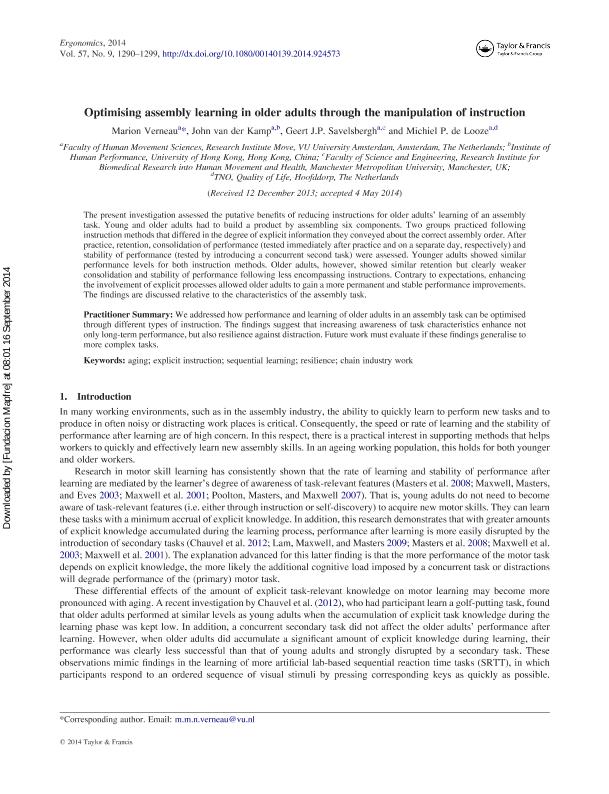Optimising assembly learning in older adults through the manipulation of instruction

Contenido multimedia no disponible por derechos de autor o por acceso restringido. Contacte con la institución para más información.
| Tag | 1 | 2 | Valor |
|---|---|---|---|
| LDR | 00000cab a2200000 4500 | ||
| 001 | MAP20140032150 | ||
| 003 | MAP | ||
| 005 | 20140916180606.0 | ||
| 008 | 140916e20140901esp|||p |0|||b|spa d | ||
| 040 | $aMAP$bspa$dMAP | ||
| 084 | $a875 | ||
| 245 | 0 | 0 | $aOptimising assembly learning in older adults through the manipulation of instruction$cMarion Verneau...[et.al] |
| 520 | $aThe present investigation assessed the putative benefits of reducing instructions for older adults' learning of an assembly task. Young and older adults had to build a product by assembling six components. Two groups practiced following instruction methods that differed in the degree of explicit information they conveyed about the correct assembly order. After practice, retention, consolidation of performance (tested immediately after practice and on a separate day, respectively) and stability of performance (tested by introducing a concurrent second task) were assessed. Younger adults showed similar performance levels for both instruction methods. Older adults, however, showed similar retention but clearly weaker consolidation and stability of performance following less encompassing instructions. Contrary to expectations, enhancing the involvement of explicit processes allowed older adults to gain a more permanent and stable performance improvements. The findings are discussed relative to the characteristics of the assembly task. | ||
| 773 | 0 | $wMAP20100019818$tErgonomics : the international journal of research and practice in human factors and ergonomics$dOxon [United Kingdom] : Taylor & Francis, 2010-$x0014-0139$g01/09/2014 Volumen 57 Número 9 - septiembre 2014 |

